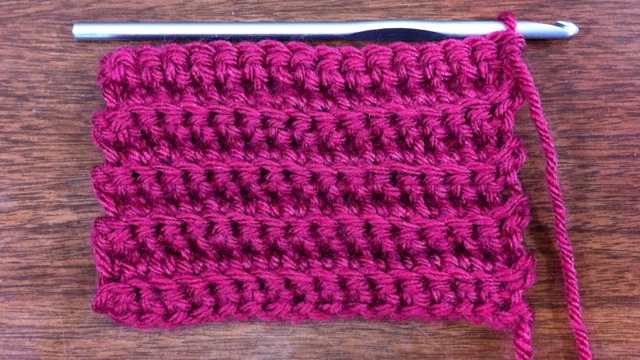I attempted my third crochet technique, double stitch method, which seemed to be the fastest, but hardest process of all. I thoroughly enjoyed the final outcome of this attempt as it proved to be the most successful of all. Although it was challenging, the process of crocheting during all three attempts started to become meditative and relaxing for me at the same time. It became painful for my hands, however, during this attempt because it uses a method of interlocking the loops into the fabric, but doing a yarn over and pulling through two loops instead of one. It is quite similar to the half double crochet method in my second attempt.
 |
| Double Stitch example |
I started this attempt by looking for new videos on YouTube that showed me how to do this technique for beginners.
Pointing out all of the flaws from my first two attempts, I tried to make this one as slowly as I can and as flawless as possible. I found a really good video on YouTube that went as slow and as detailed as possible. Following the video, I attempted to stitch my chain in the beginning like I did in my first attempt.
 |
| Final |
Overall, it was such a rewarding experience and I'm so happy I learnt how to make these headbands. Although it was challenging, I can honestly say I've conquered my very first craft and crochet projects simultaneously and I definitely created my own entertainment in the process of making it (Yes, I'm a drama queen). I'm fully addicted to this craft and I'm more than excited to start making other crafts that would be used by myself and others and maybe, starting my own business:)
 |
| Great fit |




























